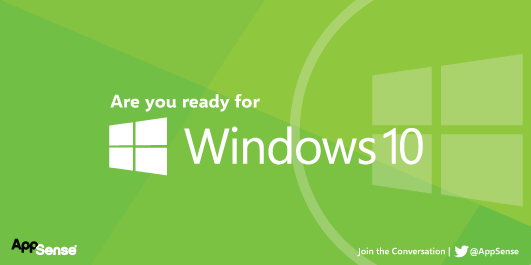Are You Ready for Windows 10?
*This post originally appeared on the AppSense blog prior to the rebrand in January 2017, when AppSense, LANDESK, Shavlik, Wavelink, and HEAT Software merged under the new name Ivanti.

Are you ready? Windows 10 is upon us and according to recent data it’s being adopted faster than ever. According to Computerworld, almost a quarter of all PCs will be upgraded to Windows 10 within a year. That’s more than 350 million devices. In fact, according to Microsoft’s blog, Windows 10 is already on more than 200 million devices, and counting.
While the majority of Windows 10 early adopters are upgrading personal devices, the wave will soon impact the business desktop as users demand the latest in their work environment. It’s inevitable—you’ll be looking at a migration project sooner than you may expect. And, if you’re like most IT organizations, that’s a headache you may not be ready to take on.
OS migration costs, time investment, and the resulting user frustration and tidal wave of help desk calls make it difficult to justify these projects. But—as you already know – users and executives want what they want and soon they’ll get their way. So it’s time to get ready.
You can prepare for the inevitable Windows 10 migration, and for every subsequent OS migration by adopting a new approach to user profiles. You’ll streamline your adoption of Windows 10 and solve your migration problem for good. That’s right, for good – no more headaches, no more user pain, no more migration madness.
If you separate user profiles from the OS, you enable users to seamlessly move from OS to OS without managing multiple profiles and policies. Rather than operate in a continuous state of migration (and angst), you can seamlessly move user personalization, files, and settings between disparate Windows operating system versions – even run multiple Windows versions in parallel – without impacting user productivity.
Consider these five benefits of AppSense DesktopNow and DesktopNow Plus:
- Migrate data between desktops – DesktopNow Plus will centrally store user content within the IT storage infrastructure where it’s safe, protected, and easily accessible, regardless of the Windows device a user chooses.
- Minimize customization of application packages –DesktopNow decouples application settings from the package and automates application configuration modification based on the destination OS. This saves hours of application package customization time and further enables user flexibility by allowing users to access their applications seamlessly from any desktop, regardless of the OS it may be running.
- Protect against malicious threats to endpoints – DesktopNow protects endpoints by reducing the attack surface that threat actors can exploit. DesktopNow uses privilege management and application control technology to prevent unknown executables that lack privilege or authorization from penetrating the endpoint, securing endpoints from threat.
- Avoid Roaming Profile corruption – When Roaming Profiles are used to persist user preferences and settings from desktop to desktop, you are enabling consumption of a significant amount of disk storage, slow logons, and profile corruption. Using DesktopNow eliminates the risk of corrupted roaming profiles so that your users are productive and your storage requirements remain slim.
- Simplify system rollbacks – With DesktopNow users can easily and automatically heal their desktops when malicious changes or unexpected system failures occur by performing a simple rollback of desktop or application settings to a preferred working state without the need to ever call the helpdesk.
Don’t remain stuck in a constant state of migration! Consider Windows 10 your opportunity to eliminate your migration headaches for good. By untethering your user profiles from their environment, you can accomplish migrations far more easily, and never again worry about the high cost and resource drain of a migration.
Want to learn more? View the webinar: Constant State of Migration. This on-demand webinar features the 451 Research’s John Abbott as he discusses the technology and market trends in user environment management that can help ease your next OS migration.